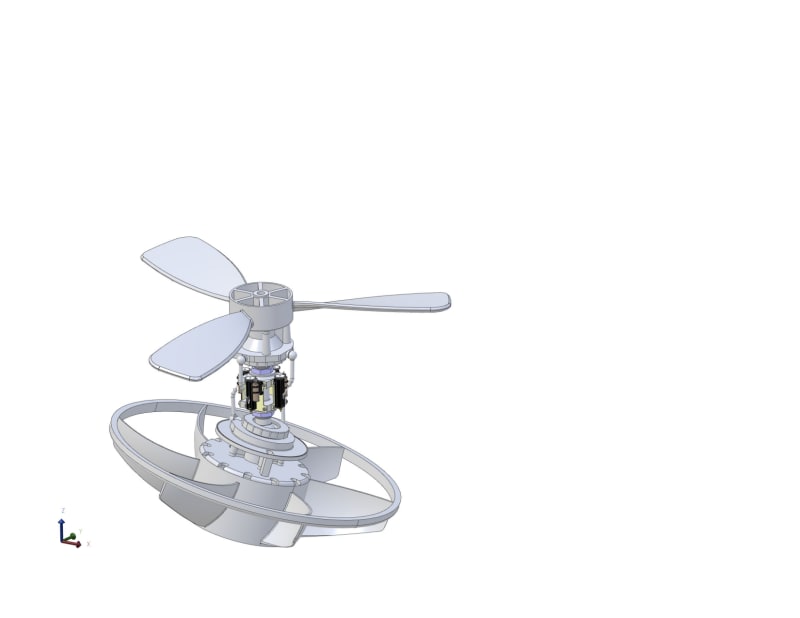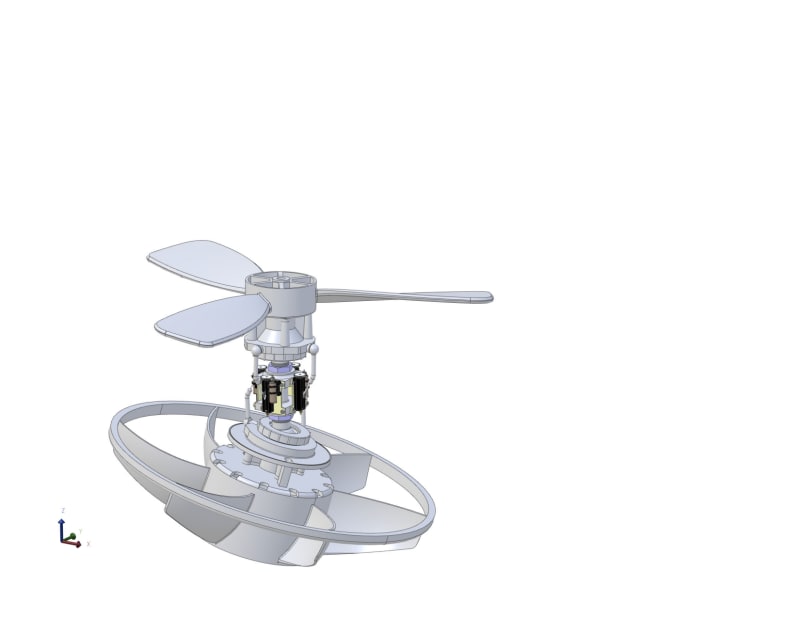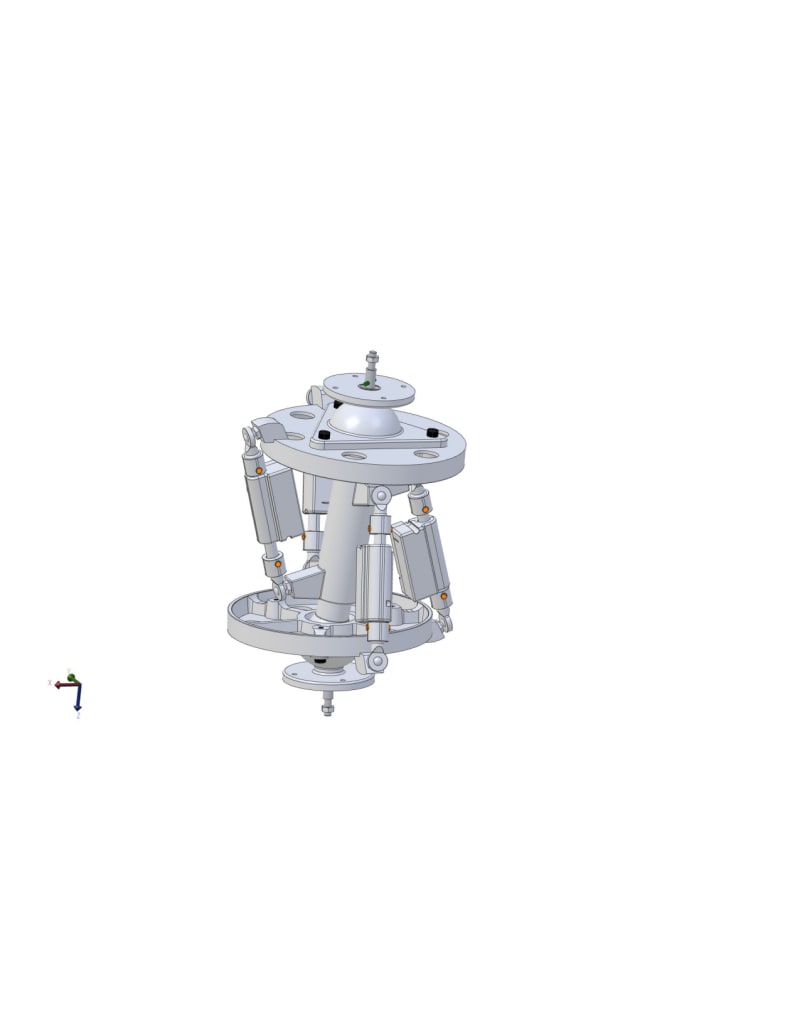
The illustrated drone is a simple mechanism that combines articulation and side shift to provide adjustable, on-the-go, variable roll, pitch, and yaw.
Past drones have been controlled in several ways, with multi-engine, and counter-rotating blades, for example. Imagine, however, if it were also possible to maneuver the craft by a simpler means of shifting the center of mass of the drone so that the blade could manage the thrust depending on where the mass was positioned.
This approach would simplify drone control systems and allow for better handling performance. Furthermore, drones would be less complicated to service.
The blade is attached to the drone’s body using a pinned (non-rotating along the axle axis) spherical joint. The cargo pod with its counter-rotation fins is likewise pinned to the drone’s body using a pinned (non-rotating along the axle axis) spherical joint on the far end of the body. Actuators control the roll, pitch, and yaw simultaneously. The blade and propulsion are controlled by these actuators working together.
For those interested in more information, the design is explained in detail within US Patent 11,666,126 B2.
There are similar mechanisms with two swashplates; however, they have yet to implement a fixed planar separation distance between them to provide a truly articulating and side-shifting mechanism. For various reasons, the distance between the two swashplates has been variable. The new mechanism would allow the drone to maneuver the blade relative to the cargo pod and counter-rotation fins to provide simpler maneuvering.
The idea could be applied to various drone types. Drones flown on windy days would appreciate the ability to vary roll, pitch, and yaw, on-the-go, to compensate for the gusts.
Those who appreciate drone maneuvering and stability would be attracted to the independent articulation, and side-shift means used to control the vehicle’s center of mass.
The product could use conventional casting, welding, and machining methods or more advanced 3D printing. In addition, some software controller logic would enhance the operation for the general user.
The number of components is relatively equivalent to the conventional drone today. There would be a slight increase in the number of actuators required. The educational component for mechanics may, however, be steeper. There would need to be a paradigm shift to establish confidence in a different way that technicians are used to thinking about positioning the center of mass for the vehicle.
Prototype:
A prototype has been developed to validate the concept. An illustration of the prototype is also included in the reference US Patent. The prototype provides for the steer angles with four actuators. Still, one can identify that the variable roll, pitch, and yaw are all possible outcomes from these four actuators.
Video
-
Awards
-
 2023 Top 100 Entries
2023 Top 100 Entries
Like this entry?
-
About the Entrant
- Name:Daniel Cowley
- Type of entry:individual
- Software used for this entry:Alibre Design Expert, DST SimWise Motion









